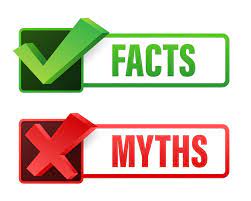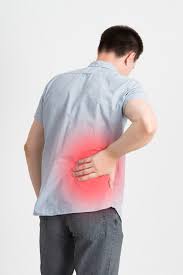Here are another 10 myths and facts about CKD.
Kidney transplantation and gender
Myth 1: In kidney transplantation males and females cannot donate their kidney to the opposite sex.
Fact: Males and females can donate their kidney to the opposite gender as the structure as well as the functions of the kidneys are similar in both genders. Young adults can donate to their parents and vice versa.
Kidney transplant and curing CKD
Myth 2: A kidney transplant will cure CKD
Fact. Along with the previous point, some may have the misconception that a kidney transplant is a cure for chronic kidney disease. Just like the disease can be slowed, but not completely cured (through medication or lifestyle changes), a kidney transplant is another treatment that can aid in your overall condition but cannot cure it completely.
A well functioning transplant will provide 45-60 ml/min of GFR, i.e. half of normal human GFR; and the blood creatinine will be normal (under 120 mcmol/L).
Regardless of which donor is used, patients will need to continue taking immunosuppressive medication (to prevent rejection) for the remainder of their life.
CKD and transplant survival
Myth 3. A kidney transplant lasts forever.
Fact. It may do. Many do not. The average survival for a kidney from a deceased donor is 10 years, and 15 years from a living donor. So younger patients may need 2 (or more) transplants in their lives.
Blood pressure tablets
Myth 4: Now that my blood pressure (BP) is normal, I don’t need to take my BP tablets anymore. I feel better if I don’t take my tablets, so why should I take them?
Fact: Many patients with high blood pressure discontinue their medications after the blood pressure is under control, as they don’t have any symptoms and/ or they feel that they are better without antihypertensive medicines.
However, uncontrolled hypertension (like CKD or ‘mild’ diabetes) is a ‘silent killer’ which in the long run can lead to serious problems like heart attacks, kidney failure and strokes. In order, to protect the vital organs of the body, it is essential to continue taking prescribed medications and control blood pressure even in the absence of symptoms.
Tests and CKD
Myth 5: Testing for CKD is a long and complicated process
Fact. Testing for kidney disease is surprisingly easy. It can be done with two simple, inexpensive tests during a routine visit with your doctor:
- A simple blood test called creatinine (normal range 60-120 mcmol/L), which leads to an estimated GFR (or ‘eGFR’; glomerular filtration rate). This is normally 90-120 mls/min. These numbers tell you how well your kidneys are working – the lower the creatinine, and higher the eGFR, the better
- A simple urine test to check for protein (called ACR) in your urine. Having a raised level of protein in your urine can be a sign kidney disease. All humans have a small amount of it.

Causes of CKD
Myth 6: No one knows what causes kidney disease.
Fact. It is true that of all the people on dialysis or with a transplant, the commonest ’cause’ is uncertain (30%). But we do know a lot about the other 70%. Of them, the biggest known cause is diabetes (20%). After that the biggest groups of causes are:
- Renovascular disease = blockage to the arteries (blood vessels) to the kidneys. Both have to be blocked or half blocked
- Glomerulonephritis = a group of ‘autoimmune’ conditions where the body’s immune system (defender) attacks the glomeruli, which are the tiny filters in the kidney (a million in each)
- Tubulointerstitial disease = damage to the tiny tubes that drain urine from the glomeruli
- Obstruction to the urinary tract = blockage to the bladder, or kidneys, or ureters (the tubes that connect them) – or prostate in a man. If the cause is the kidneys or ureters, again both have to be blocked or half blocked
- Polycystic kidney disease = the only common inherited cause.
Back pain and kidneys
Myth 7. I have back pain so it must be my kidneys.
Fact. Kidney disease rarely causes back pain. Pain in the back may occasionally come from kidney disease if you have infection or blockage in one or both kidneys. Other forms of kidney disease rarely cause pain in the back.
 Site of kidney pain – a rare cause of back pain.
Site of kidney pain – a rare cause of back pain.
Patients with CKD often also state “I don’t have any trouble passing my urine so my kidneys must be fine”. Also, not true. Even patients who are on dialysis make urine. Damaged kidneys will continue to make urine, even if the urine is not good quality, i.e. they no longer properly clean your blood.
Kidney stones and CKD
Myth 8: Kidney stones cause CKD.
Fact. While kidney stones are not pleasant, they do not usually lead to kidney disease. Cases of kidney stones resulting in permanent damage to the kidneys are very rare.
High blood pressure is also a rare cause of CKD, though most patients with CKD have high blood pressure – so the two are linked. This is more information about high blood pressure.
CKD and what you can do
Myth 9: If you are at risk for kidney disease, there is nothing you can do about it.
Fact. Many people have the misconception that kidney disease is caused by genetics and therefore not preventable. However, in many cases, kidney disease is preventable (to an extent) – or, if not preventable, at least partially treatable.
CKD and seeing a nephrologist
Myth 10. All patients with CKD need to see a nephrologist.
Fact. No. Most patients do not. If you have mild CKD (CKD1-2, or CKD3B), most people will not need to see a nephrologist. Many patients with CKD3B will need to see one, often just once. All patients with moderate-severe CKD (CKD4-5) should be seen by (or discussed with) a nephrologist.
Last Reviewed on 4 April 2024
